Beringer US distributor living the moto life
An ever-growing library of moto-related articles, books and memorabilia, and a quartet of iconic vehicles grace the Gardena, CA, North American HQ for Beringer Brakes, a testament to one man’s childhood dream to embrace the automotive and motorcycle industry.
For Frog Specialties owner Philippe Danh, becoming the exclusive stateside distributor for Beringer last year was the culmination of two decades working with the French-based brakes innovator. And, even now, at 60, that connection with the moto world still sparks the energy and excitement of youth in him.
Born and raised in the French racing capital of Le Mans, Danh grew up surrounded by car and motorcycle competitions.
“It’s like Indy or Daytona in the US. All my neighbor’s raced bikes, raced cars – so, from a young age, you know … I said oh my god I want to do this,” Danh says, sitting in his offices, a large, converted sound stage and studio. “Then, as a (teenager) I came to the US as an exchange student back in ’75 and fell in love with America and the American style of motorsports.”
A motosport writing and editing career, first based in France, and later in the US, became Danh’s first entry into the automotive world. His current offices still show off the jackets he wore while covering the industry for the likes of Street Rodding Illustrated, Street Rodder Magazine and Hot Rod Magazine, the latter in the mid to late ‘80s.
“During that time, my contacts grew huge. You know, I knew everybody in the business here. I met a lot of people over in Europe and my phone was ringing like crazy for American car parts,” Danh recalls. “People wanted stuff for their Corvettes, muscle cars, dragsters, race boats and Harleys as well. So, I decided in early ’89 to just quit the magazine business and open up Frog Specialties full time.”
Danh’s first look at Beringer brakes, ironically, came in the mid-‘90s, in the form of a magazine ad in a French moto magazine he received regularly from Europe.
“It was in the early days of tuning sport bikes … I spotted two great manufacturers of exhaust pipes and brakes and I thought wow those are badass brakes.
“So, I went to the Paris Bike Show in ’97 and talked to (Gilbert) Beringer and said ‘Hey, I’d like to sell your brakes in the US.’ He was mildly interested. He doesn’t really like the US, so it was hard to convince him, but I finally did it in ’98. We did the dealer show in Indianapolis together and that’s how it got started – that’s also how we met Matt Chambers of Confederate Motorcycles way back then.”
Now, 21 years later, Danh is the number one export customer of Beringer products worldwide. His product knowledge is second to none. And he’s proud to have survived the ups and downs of business, and stayed true to his passion for all things that “burn gas and make noise.”
Beringer Brakes US workbench for testing master cylinder and caliper rebuilds — Rahoul Ghose
(Le Mans) is like Indy or Daytona in the US. All my neighbor’s raced bikes, raced cars – so, from a young age, you know … I said oh my god I want to do this.
BERINGER OFFERING TRACK-TESTED IMPROVEMENTS TO BRAKING
For Danh, Beringer represents a very tangible improvement riders can make to their bikes whether in a street or racing environment, and he points to the company’s master brake cylinder, in particular, as an example of where the aftermarket greatly exceeds OEM standards.
“This is where OEMs cut the most corners because (master brake cylinders) are more precise, a smaller part, that’s more difficult to machine … that’s where they want to spend the least amount of time. Ours is much more advanced than anything on the market.”
Danh adds the company’s brake rotors have also proven themselves under the harshest of racing conditions.
“If you follow a dirt track racing, last year we supplied the Harley team with the rear brakes -- Brandon Robinson was glowing that rear rotor red for 25 laps in the main events. No problem, never warped them or anything like that. So, we have very high-quality materials and care is given to the assembly ... it’s precise because they’re hand assembled and it’s a low production volume. That’s why they’re always behind, because it’s made by hand and triple checked before it’s shipped over to the US.”
Calipers are made of aluminum with different grades used for different applications. For endurance racing that means an exceptionally hard aluminum that withstands extreme heat, but which must be machined slower in the production process.
“It will absolutely never get soft under intense heat,” Danh says. “So that’s the thing about Beringer. It’s better quality components. The seals that we use in the calipers and master cylinders are different than anybody else’s in the way they are made, and the material used.”
The company is always improving their products as well, with changes to the patented brake pad retaining system and bleeder screw being made in recent years, all based on usage data.
“They noticed that the standard cross pin system tended to cake the brake pads. When the little pin got grungy with brake dust and dirt the pads wouldn’t slide out very well and that would create drag. So (Beringer) created the Aerotec brake pad retaining system which is just a hard, chromium-plated pin on one end and another pin on the other side with a little stainless spring that puts a little bit of tension on it.”
Now, there’s no more air in the middle of the pad, and no cross pin, so it makes the pads slide a lot better, he says.
“They’ve also improved on their bleeder screw because on the six-piston calipers it was hard to reach. Sometimes you’d have to do it from across the wheel -- it was right behind the banjo bolt. We redesigned that part and integrated the bleeding screw into the banjo bolt. From the brake line side -- boom, boom -- you can bleed it.”
Beringer Brakes shots — Beringer Brakes
If you follow a dirt track racing, last year we supplied the Harley team with the rear brakes -- Brandon Robinson was glowing that rear rotor red for 25 laps in the main events. No problem, never warped them or anything like that. So, we have very high-quality materials and care is given to the assembly ... it’s precise because they’re hand assembled and it’s a low production volume.
WHERE THEY’VE BEEN … WHERE THEY’RE GOING
Danh’s love of flat track racing was his original impetus for getting Beringer a presence on that circuit.
“We have four teams right now that use the rear brake, and six use the front brake for the TT races because the TT you have to have a front brake, and we have a really good setup for that. And then, oddly enough, we’re big in drag racing. On the east coast, all those are pro street and pro turbo Hayabusa, I mean, they go 200 miles an hour with those things. And sometimes they have a short run off. So, very often they use only a single brake to save on weight and they cook the stock brakes.”
Danh says he has been selling a lot of front brakes and lightweight rear caliper sets with floating master cylinders in many specialized racing markets.
You may also have seen Beringers on several recent custom bikes touring the states.
“We have a history of loving customs. I’m a custom bike guy, I’m a custom car guy, I’m a hot rodder. The guys in France are custom bike guys … they have all kinds of funny contraptions. So, I love to support the custom bike builders in this country.”
Most recently two Indian Scout builds by Keino Sasaki and Satya Kraus featured Beringer hardware, with Keino’s café-style creation sporting the company’s elite twin inboard braking system on the front wheel (from the aviation world) as well as a rear caliper setup. Kraus has often used more standard Beringer options in his Harley sportsbike transformations.
“And because he makes those front-end kits that use inverted forks, they use standard radial-mount calipers. So, it’s not something special we had to make for him -- it’s a standard 108 mm spacing caliper, you can put it on any superbike.”
Keino’s Indian Scout had custom brackets done up to adapt the inboard system and received a lot of buzz on the International Motorcycle Shows (IMS) circuit this season. (view keino build gallery)
For Danh the cost is a tradeoff, giving the brand a much-needed visibility boost in North America.
“Hopefully people will notice that brake setup and go to the website and realize we also make regular brakes for regular bikes. I also love Brian Fuller. So, whenever we can work with him … and Dar Holdsworth at Brass Ball Cycles. All these guys we would like to support.”
In 2018 Beringer USA will however be shifting a big part of its promotional budget to superbike racing.
Beringer is really big in road racing in Europe but not necessarily here in the US, Danh says, adding the company has partnered with Westby Racing and resident South African superbike phenom Mathew Scholtz, a rider who’s been giving factory competitors the fits on the MotoAmerica Motul Superbike Championship circuit.
“In the 2017 championship -- against two factory Suzukis and two factory Yamahas -- he placed his privateer Yamaha on the top of the podium -- he won two races with a super production bike, not even a super bike spec motorcycle.”
Adding to the group is Superbike Unlimited, who will demo the product at races with their display and trailer.
“We’ll get to market the product with them to the general public,” Danh says, adding the goal is to penetrate the lucrative street sports bike market in North America.
Keino Sasaki's Indian Scout build featuring Beringer Brakes' twin inboard braking system — Rahoul Ghose
We have a history of loving customs. I’m a custom bike guy, I’m a custom car guy, I’m a hot rodder. The guys in France are custom bike guys … they have all kinds of funny contraptions. So, I love to support the custom bike builders in this country.
HITTING THE CLASSICS MARKET
Ultimately, Danh would like to see more Beringer brake systems on the street in general, hence the push to also get more of the company’s classic kits on vintage and heritage rides.
“We have more and more applications now on the classic bikes – the (Honda) CB750 four cylinder and (Kawasaki) H2, and the (Yamaha) RDs, and all those bikes. As far as development of new products they’ve made caliper adapters. So, if you want to go fancy with radial-mount, four-piston calipers you can put them on Harleys now. You’ll go to from your standard axial on a Sportster to a radial caliper.”
There’s also been movement in the development of matching rear brakes, which has been a common request lately.
“So, we’re going to come out with a rotor pretty soon and it’s going to be tested on several bikes over in France.”
Also look for axial master cylinders with adjustable reach in the US, something authorized long ago for the European market.
The classic kits are in fact big sellers in Europe, but have had less success in the states, probably due to the cost.
“I think (in Europe) it’s supported by the fact that there’s intense vintage bike racing. There’s even a European classic endurance racing series -- they have four-hour and eight-hour endurance series. They have the Bol d’Or Classic, the Le Mans 24 Hours Classic. They don’t race 24 hours nonstop like the current bikes. But it’s several sessions of two or three hours over the course of 24 hours. And so that has shown the guys on the street that the current technology and better materials will improve the braking greatly on a classic bike.”
Danh said with the average cost of a classic bike in the States being fairly low, the cost of a brake upgrade can be a little daunting.
“I mean I recently bought a Honda 750 for five grand. It’s kind of hard to justify $1,800 in brakes on a $5,000 bike. And, over here we don’t ride as hard. It’s mostly freeway, So except in an emergency when somebody pulls in front of you, you don’t need the brakes as much. Over in Europe they have twisties everywhere. You come out of your garage it’s a twisty; they have roundabouts; they have speed bumps; they use the brakes a lot.”
Part of increasing the products presence on the market will interestingly again rely on the adoption by builders in the US.
“We think it once more people ride with the classic bike brakes that we offer they’ll like it. I mean on the CB750 I’ve ridden, they’re absolutely horrible. You put a Beringer on, it’s like ‘wow’ … I mean you feel confident in riding the bike because the brakes are so good.”
Time and market penetration should see increased sales, he says.
Beringer currently has 82 dealers throughout the US, of which 30 order new product on a regular basis.
One the company’s strongest selling points -- the product’s 12 different colors and finishes -- have in fact made it difficult for in-person buyers to see what’s available. Dealers are not necessarily inclined to stock all available versions.
“That’s why I do the public shows like the Outlier's Guild Motorcycle Show in Los Angeles or the Long Beach Motorcycle Show (IMS) or AIMExpo. Once people have the part in their hand and see the beauty of the machining, the detail and how the master cylinder feels in their hand, they’re sold. And that’s the problem … it would take a huge budget for us to be able to have a display at every dealer we have for people to see it.”
As an interim solution Beringer hopes to increase its presence on YouTube, with videos of all iterations “to put the product more upfront to the public for them to appreciate it.”
Philippe Danh, Beringer Brakes US — Rahoul Ghose
We have more and more applications now on the classic bikes – the (Honda) CB750 four cylinder and (Kawasaki) H2, and the (Yamaha) RDs, and all those bikes. As far as development of new products they’ve made caliper adapters. So, if you want to go fancy with radial-mount, four-piston calipers you can put them on Harleys now. You’ll go to from your standard axial on a Sportster to a radial caliper.
LIVING THE MOTO LIFESTYLE
Getting back to the personal, Danh’s moto collection includes an international variety of enviable vehicles: a custom, bright yellow, two-door hard top 1956 Simca Aronde (a French icon); a blue ‘66 Ford Mustang (an American classic); a 1975 Norton Commando 850 (essential British Iron); and a 1973 Honda CL350 Scrambler (a Japanese workhorse).
Most are in a state of flux … the ‘70s Norton, with a left-hand-side shifter, sits ready for a Beringer brake upgrade and maybe an appearance in this year’s Corsa Motoclassica at Willow Springs Raceway (Rosamond, CA) in April.
“The oiling system has been all done up and everything. It just needs to be filled and pressurized … then put some gas in the tank and kickstart it,” Danh says. “It’s got an electric start, but I like to kickstart the thing. So, it’s not far from being rideable … a weekend away.”
The Scrambler is waiting on some engine repairs … suffering from a worn camshaft and rocker arms.
And the Mustang? … it may soon be out the door.
“There’s a guy selling at pretty nice ‘75 Honda CB750 for not too much money. So, I’m going to sell my Ford Mustang and I think I’ll go buy that thing and put Beringer brakes on it and have something that’s already rideable. I can take it to the shows and cruise nights right away because otherwise it will snow in California before anything happens with the other bikes.”
It all comes down to time Danh admits, which the business leaves him little of.
“Very often my friends from Europe remind me how lucky I am. I live in California. I do my own thing. I own my own business, which is good and bad because you’re enslaved to your own company. You take work home on the weekends. It never stops because you think you’re never doing enough and you could do more and better. So, it’s kind of a curse.
“However, this job has allowed me to meet incredible people. It has allowed me to meet a man who in a funny runabout way made me meet my future wife. I’ve had an incredible life. I’ve done some interesting things: a drag race, my kids are into cars now -- they’re drifting themselves. It’s been good and at this point … I’m pretty happy with what I have done.”
Speaking of wives, Danh last year took his life’s ambition back home, literally, to be married where it all began.
“That was the test,” Danh says with a slight twinkle in his eye. “Who takes his fiancé to the Le Mans 24 hours and tries to stay up 24 hours at night going to the different corners of the race track and still have the wife say ‘yes I do’ seven days later. So, yeah, it was the ultimate test and I love her to death for having done that. I’ve run into the perfect girl, so it’s really cool.”
The future? Danh says he literally still feels 35 inside. He still races bikes when he can, putting in an annual appearance at local vintage races when time and a functioning bike allow.
“I just feel it when I ride my bike … I want to go racing. I have long-term plans for the business and things I want to do – like build something to race at Bonneville. And that’s where I have to remember, whoa, I’m 60! I’m going to do it pretty quickly because when I’m 80, I’m not going to throw a leg over a race bike. Time flies when you’re having fun I suppose.”
A true moto enthusiast who will ‘not go gentle into that good night.’
ONE LAST NOTE
Beringer Brakes US recently added Brian Hatano to the team to handle sales, marketing and social media tasks as well as provide support at various racing events and custom bike shows across the country.
Hatano comes straight from the world’s largest motorcycle media company where he was Digital Editor of Motorcyclist magazine and most recently, social media specialist for all brands including Cycle World, Motorcyclist, Hot Bike, Baggers, Sport Rider, and Dirt Rider magazines. In addition to holding past editorial positions at Car Craft, Sport Compact Car, Super Streetbike, and Petersen’s Drag Racing magazines, Brian is
also a hands-on custom painter and fabricator, having worked on numerous high-profile builds and film vehicles for Jay Leno, Kanye West, George Clooney and Travis Pastrana.
And if you’ve seen TV shows and movies like Cobra, The Fast and the Furious, CHiPs, Streets of Fire, Pixar's Cars, xXx (Vin Diesel's GTO), E.T. The Extraterrestrial, 2Fast 2Furious, and Bones, then you’ve probably seen some of his work.
Hatano's personal stable of vehicles includes a 1997 Harley-Davidson Bad Boy Springer, a 1978 Yamaha RD400, a turbocharged 2007 Kawasaki ZX-10R, a 2016 Z-71 Colorado, and a Vortech-supercharged 2007 Corvette.
For more information on Beringer Brakes visit them online at beringerbrakes.us. | Beringer Brakes Links

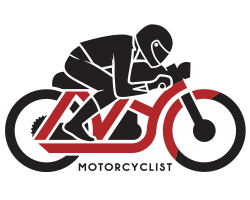

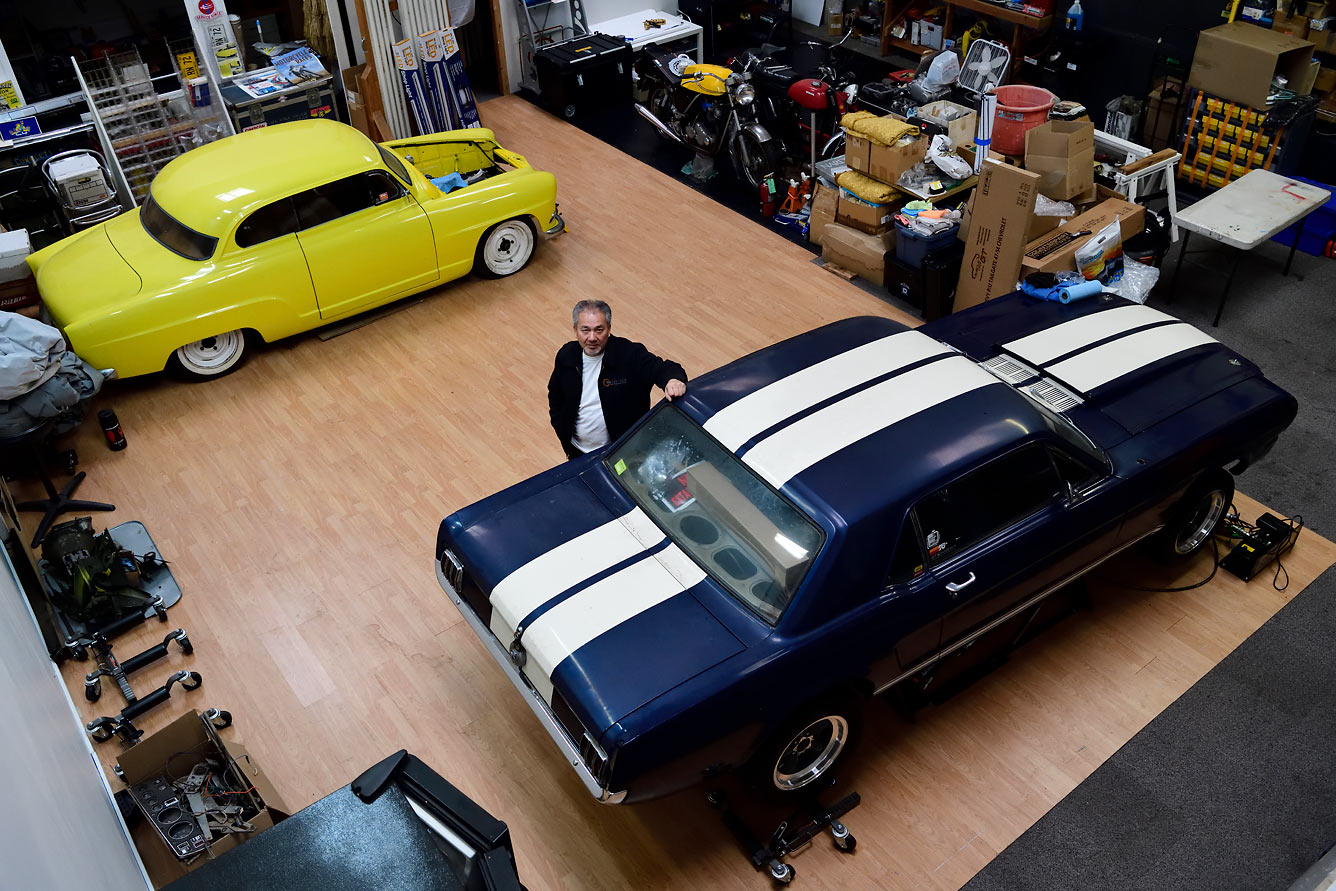
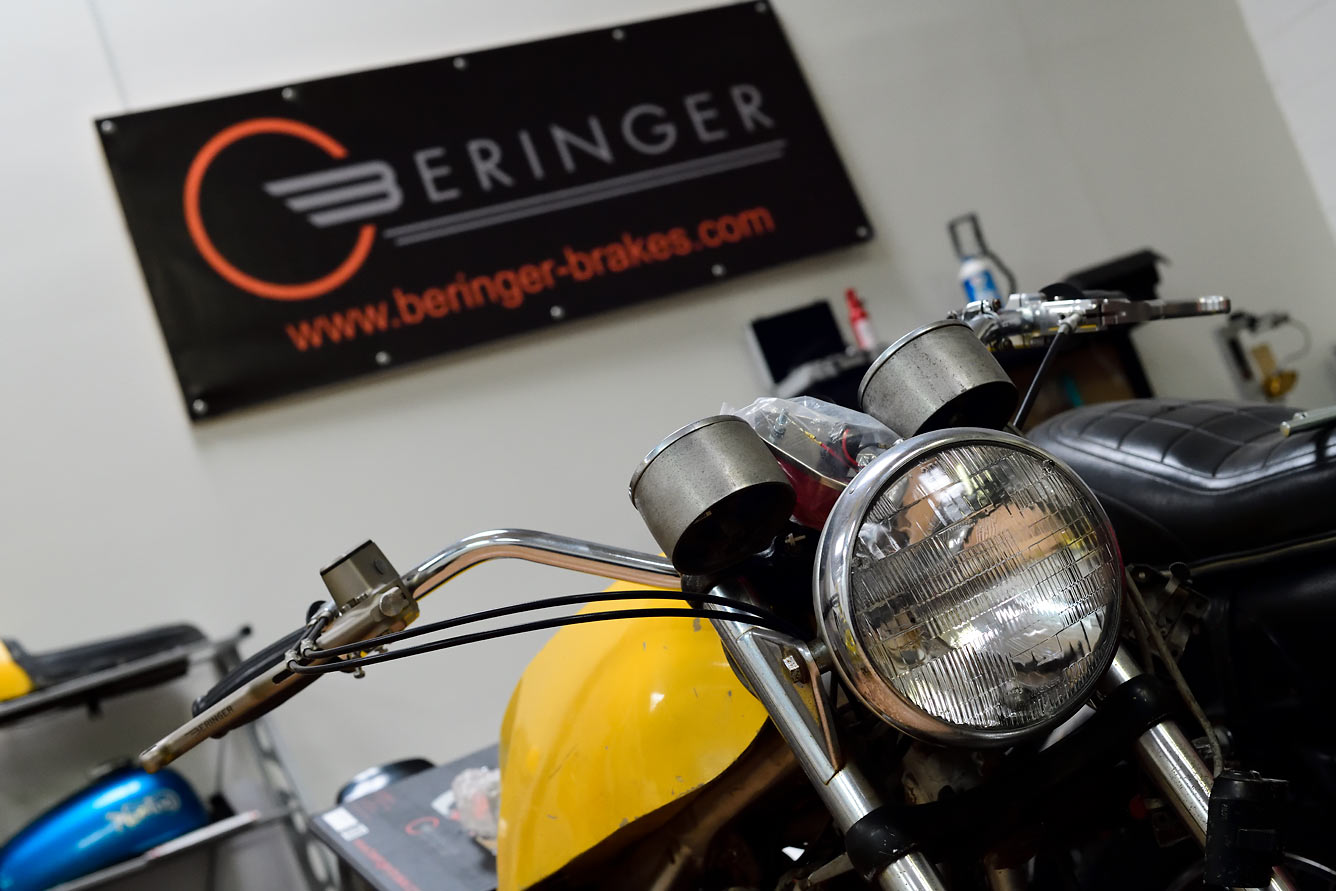
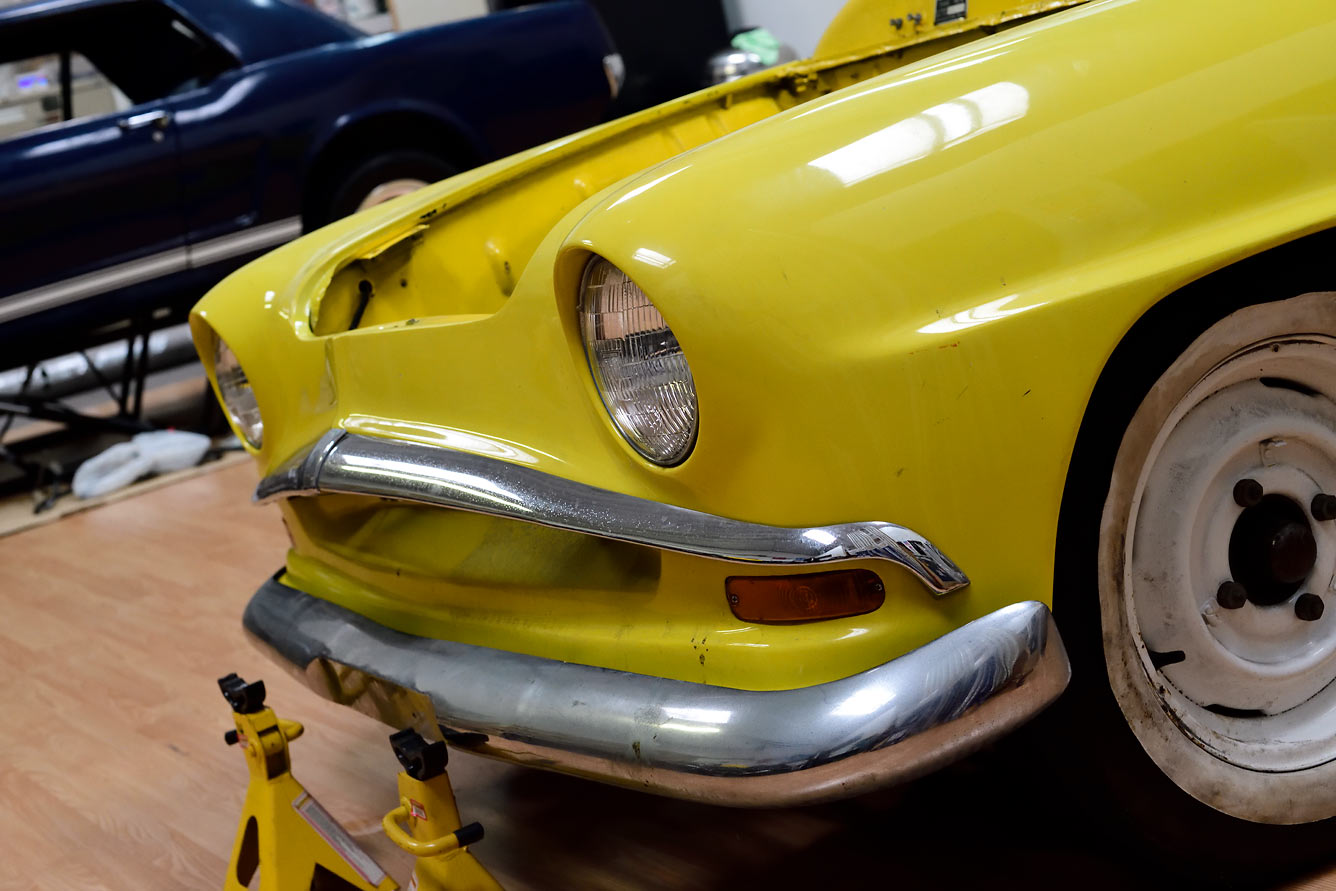
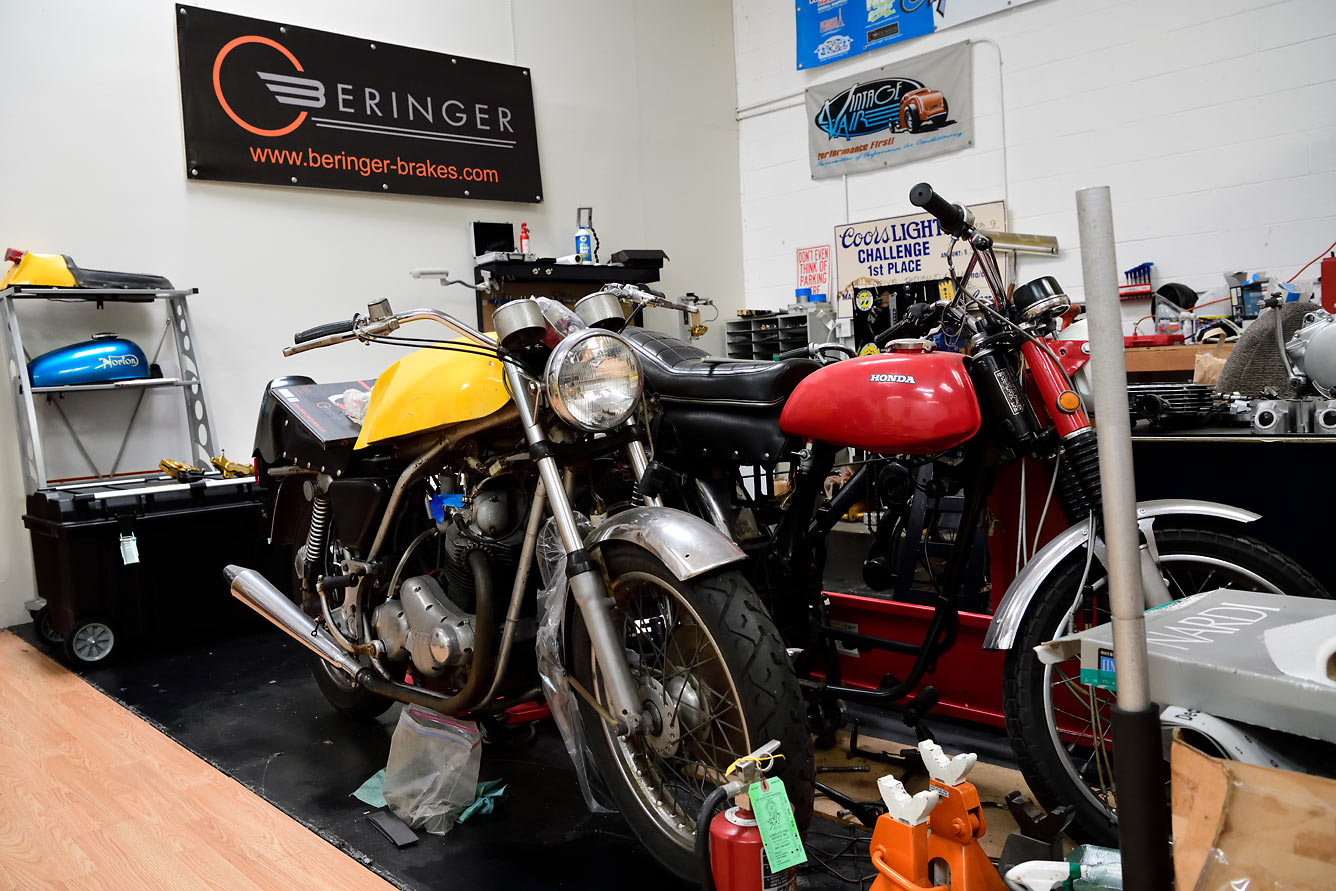
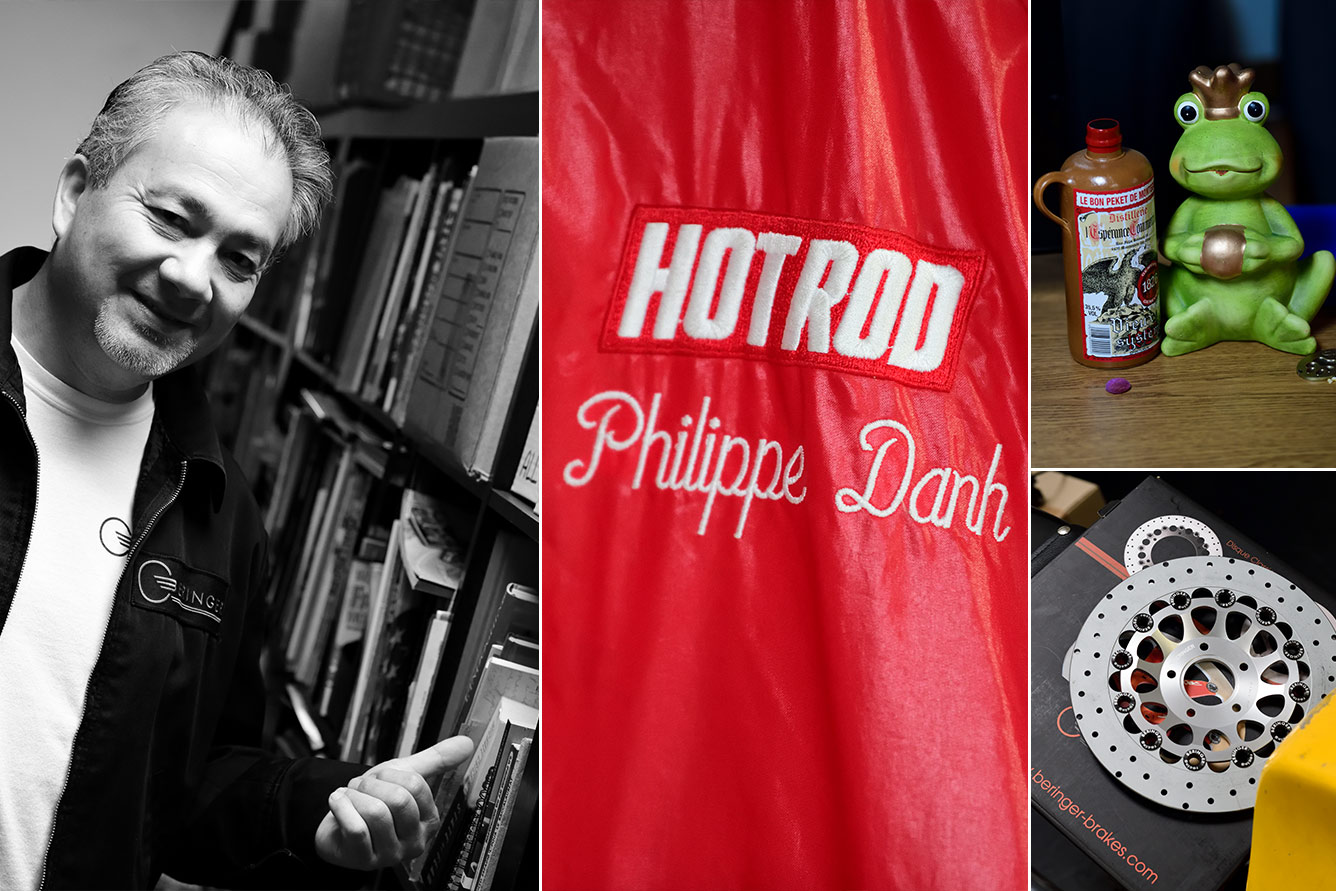
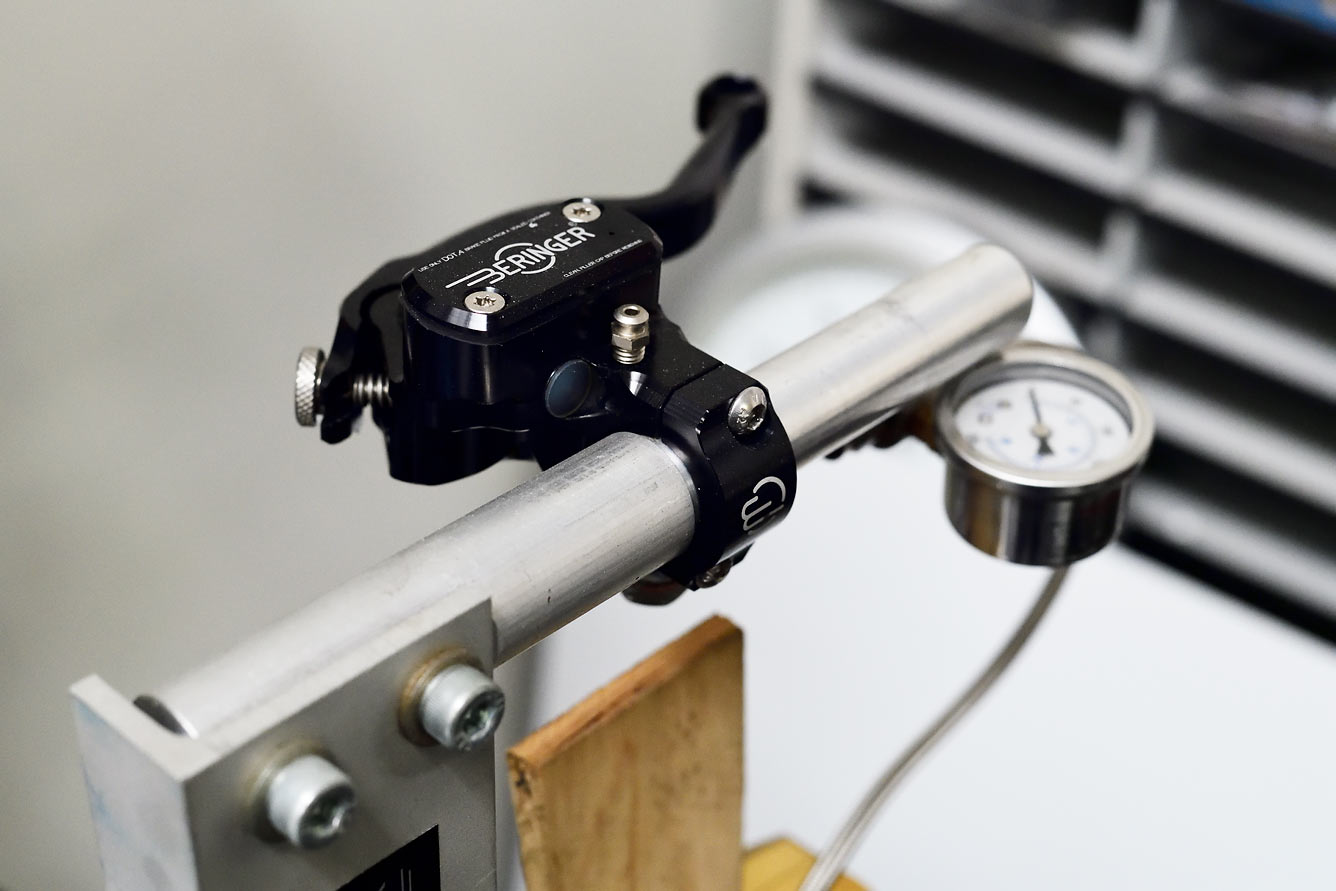
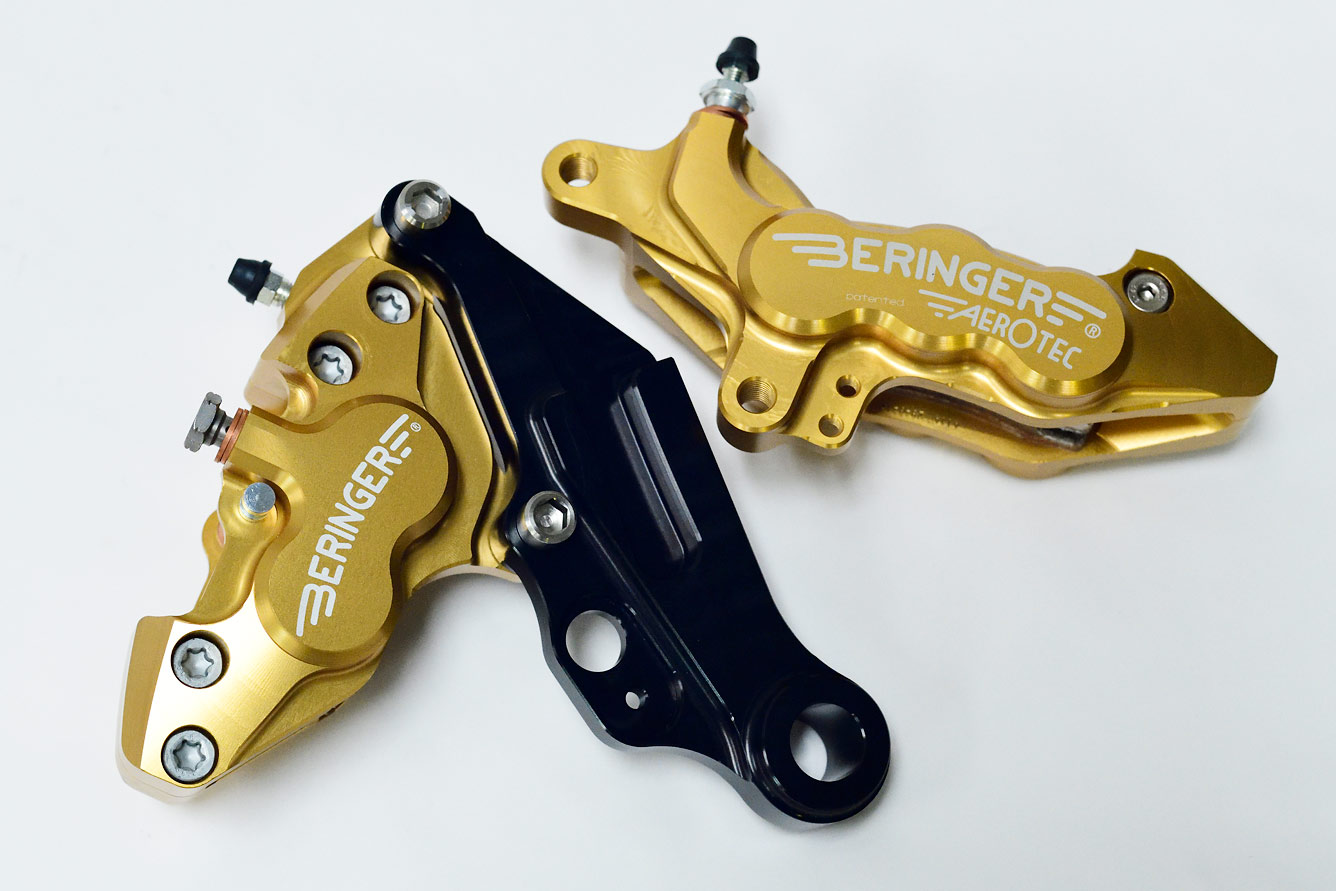
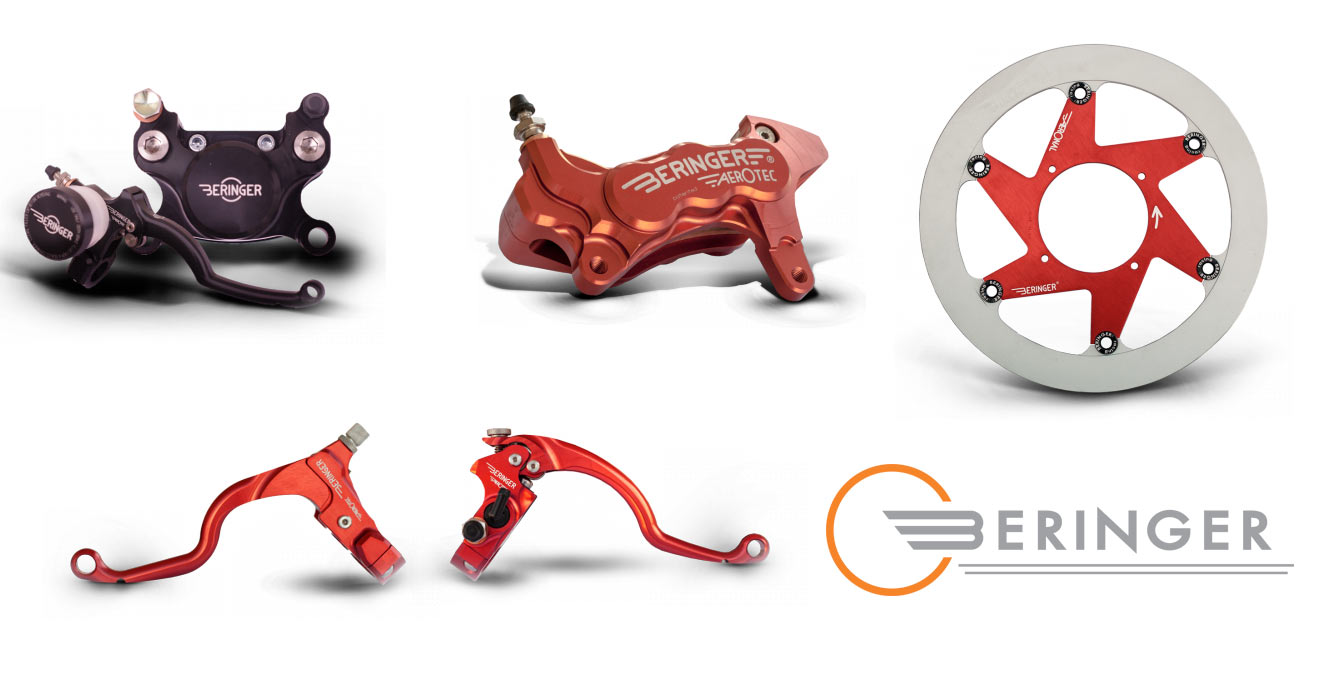

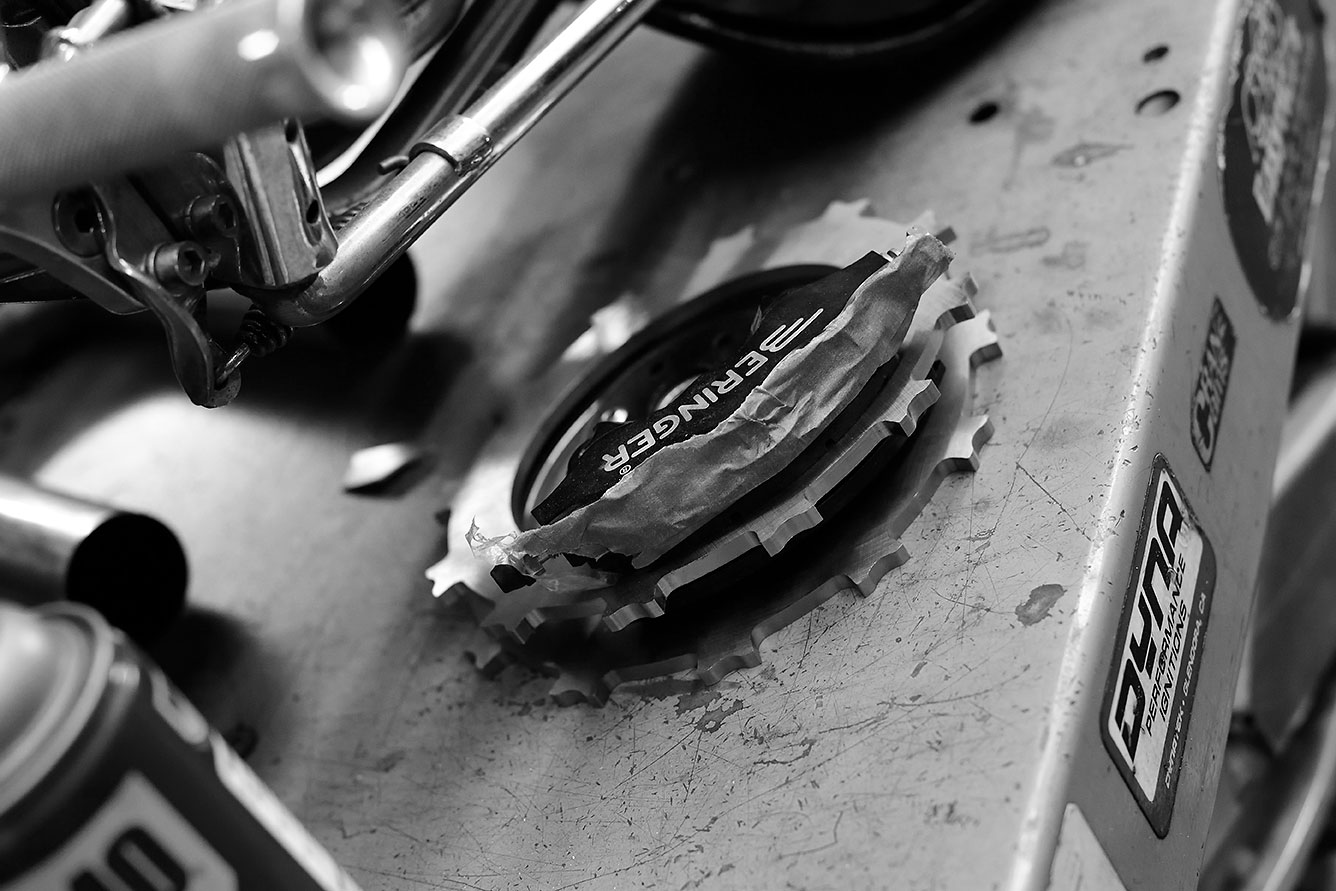
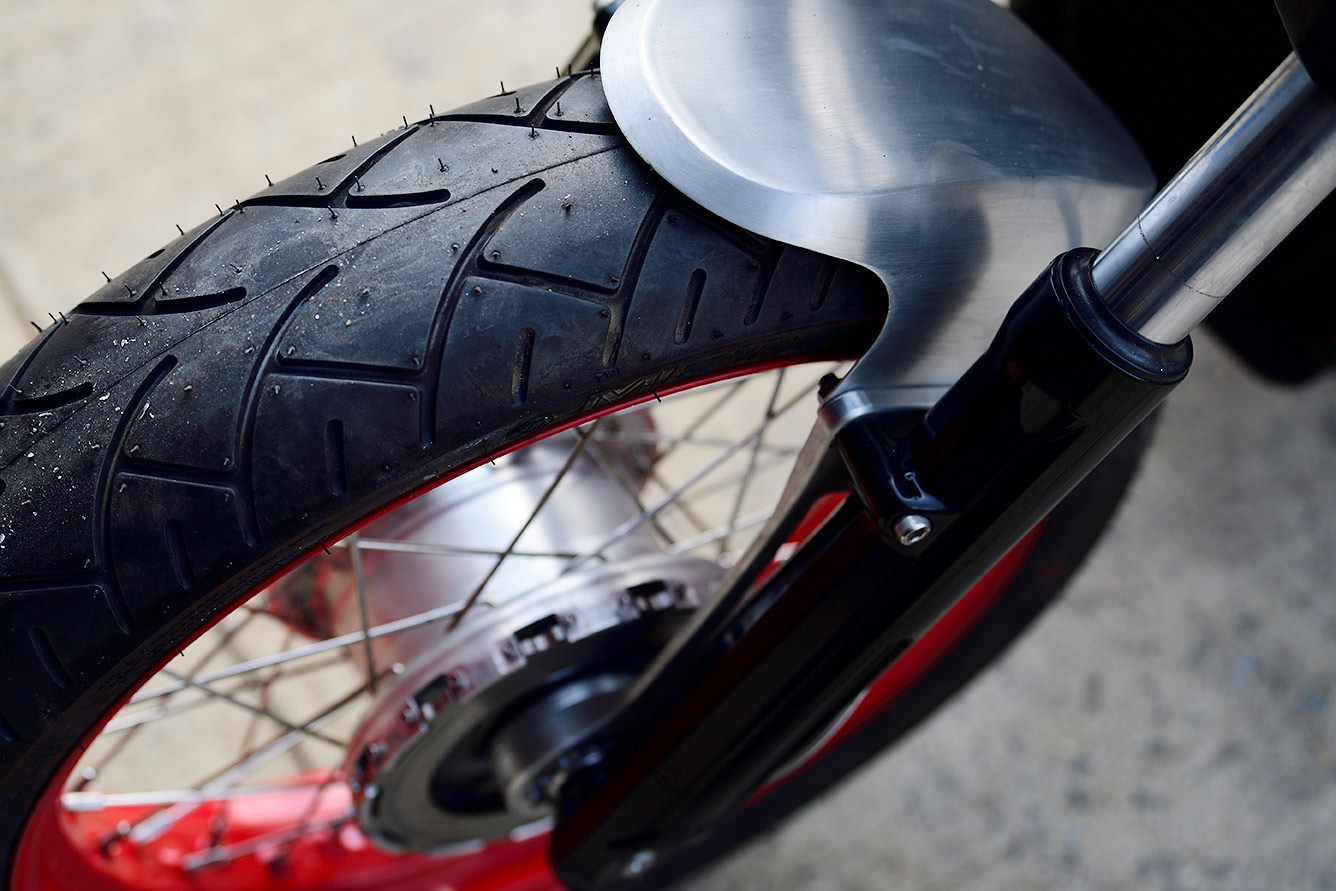
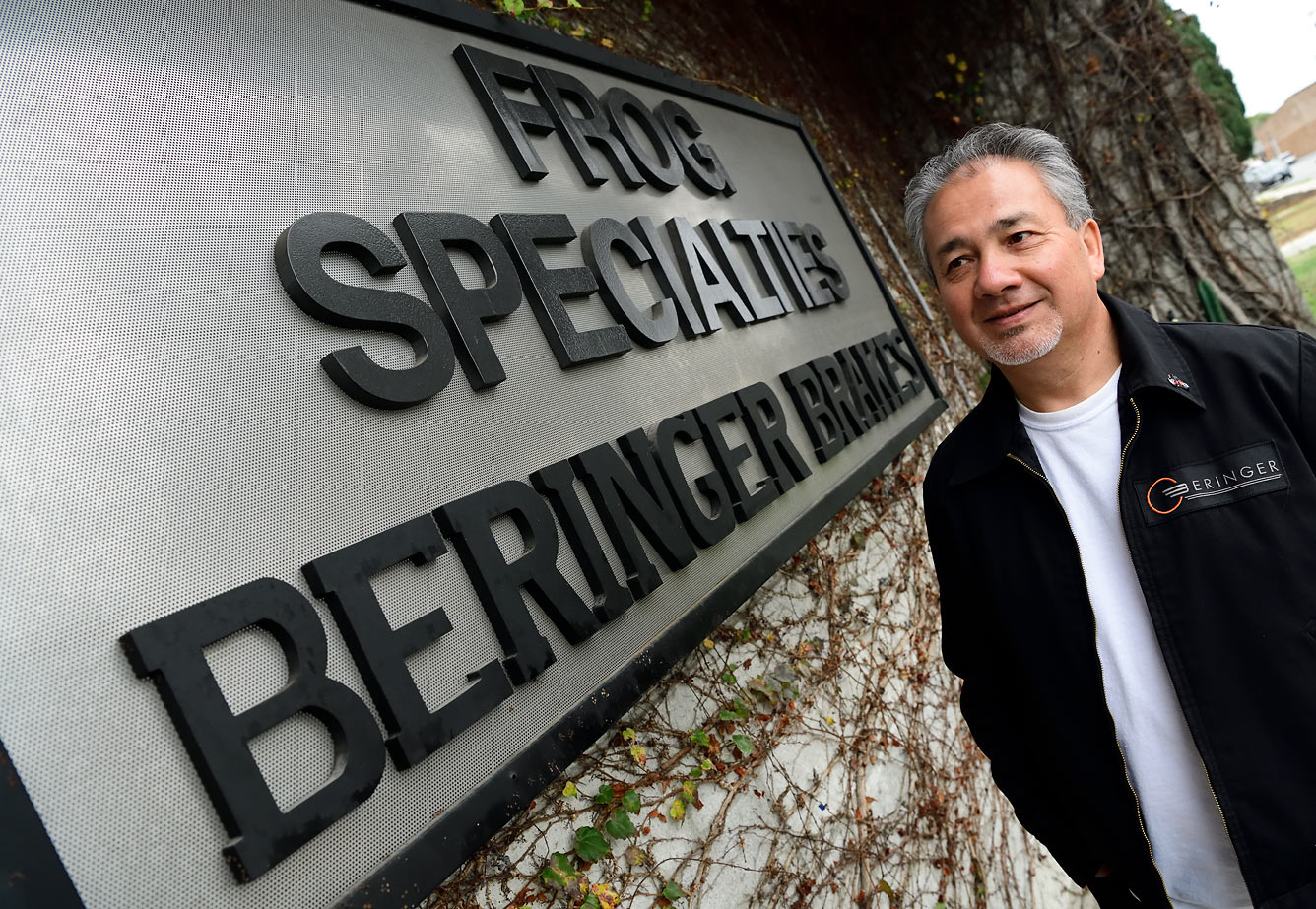



Philippe is a true gentleman and leading the charge for @beringerbrakes
Thank you NYC Motorcyclist
One-finger braking on a 1975 Honda CB550! Yess!!!
Nice Brian Hatano shout out too.
One-finger supermoto race brake, two-finger stoppie show off brake 😁
Best brakes I’ve ever run !!!!